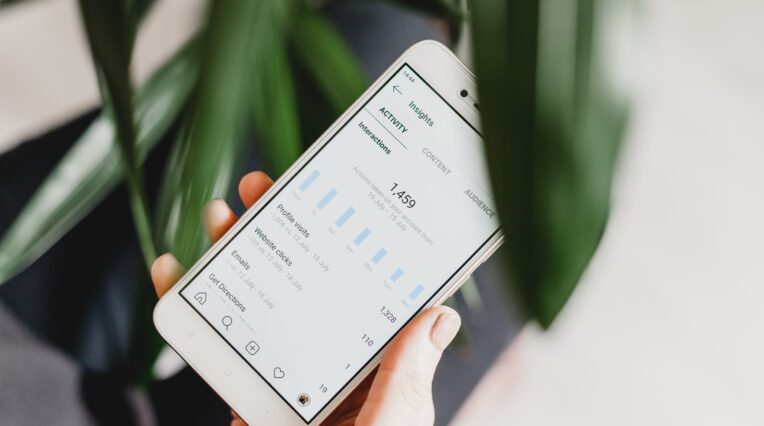28/02/2020
Marketing segmentation – Why one size doesn’t fit all

In this guide, we’ll cover:
- What segmentation is, including different types
- Key steps to implementing a solid segmentation approach in your marketing
- Using insights to create personas and drive marketing activity
Introduction
If you’re a marketer and you’re not segmenting your customers and prospects, then you’re almost certainly not getting the ROI from your marketing that you could be.
Marketing without segmentation is like throwing a handful of darts at a dart board whilst blindfolded. If you’re lucky, you might hit the bullseye with one of them. But chances are you won’t hit the target with any, and you’ll have wasted all of your darts.
Segmenting your audience means that you can do a far better job of crafting marketing messages and strategies that get the attention of, and resonate with, the people you want to reach, meaning you’re far more likely to see good conversion rates with your marketing.
What is segmentation?
Segmentation means dividing up your customers and prospects into groups that share common traits. You can use different types of data and insight to do this, including demographics, product usage insights and psychographics.
By dividing up and understanding different segments of your audience, you’ll be able to create tailored marketing campaigns for each group.
Without segmentation, you can end up trying to market to everyone. It’s hard to create a message that resonates with everyone, and you run the risk of bland marketing that won’t appeal to anybody.
The goal of a segmentation strategy is to make your prospects feel like you’re talking to them and them alone – marketing to an audience of one, as they say. It’s not done on guesswork; it enables you to tell stories and create messages based on data-driven insight.
Have you ever felt like a brand just seems to understand you, makes you feel at home and offers just what you want, when you want it? They’ve probably got a customer segment that fits you like a glove.
Types of segmentation
Let’s look at four types of data that you can collect and use to segment your customers and prospects into different groups. Usually a segmentation strategy will combine all of these to some extent to create an ideal customer persona.
Demographic segmentation
Dividing people up based on demographics means using metrics such as geographic location, age, gender, education, job role, income or culture. This is a fairly basic type of segmentation, but it can be effective, and the data can be fairly straightforward to get hold of.
If you’re a healthcare business, you might offer treatments or support that affects a specific demographic more than others, so segmenting based on age or gender would make sense.
You might also find that most of your customers come from within a certain distance of where you’re based, so using location data to segment would also make sense. There’s no point in marketing to people 200 miles away if they’re unlikely to travel to you.
There will also be broad similarities between people who live in the same locality, or have the same type of job, or share other demographic characteristics. As humans, we’re driven to socialise and work with others who are similar to us and conform to some extent.
Behavioural segmentation
Behavioural segmentation looks at grouping people by the way that they act. This could include how they interact with your product or service; some customers may use what you sell in a very different way to others.
Let’s take an example that most of us will be familiar with – the smartphone.
- One group of people will use it to only make calls and send messages
- Others will use it as a camera and social media tool, but will hardly ever make calls
- And others will use it as a business tool, sending emails on the go and downloading documents
Can you think of a product or service that you offer that is used differently by different customer groups? How could you separate out these groups and market to them in a way that resonates with the way they use your product or service?
The owners of The Gym Group were in the leisure business and recognised a customer segment that wanted low prices, a simple service and complete convenience, rather than the more exclusive feel of health clubs. So they set up a gym with 24-hour access, low subscription prices and nofrills customer service – and it’s been a huge success.
Airlines are another great example of segmentation based on product usage. They’ve taken one of their most profitable customer groups – the business traveller – and created a service just for them. They know that this customer wants comfort away from holiday travellers, that they often book late, and cost isn’t a big issue for them because their company is paying. So business class is a service designed just for them, in a way that will maximise the airline’s profits from each sale.
Psychographic segmentation
Psychographic segmentation explores how customers see themselves. What are their values and opinions and what does their lifestyle look like? What kind of image do they want to project?
Well-executed psychographic segmentation is responsible for some of the most powerful and effective marketing out there. We tend to be more susceptible to messages that resonate with our values and beliefs than anything else.
There are three psychological phenomena that support this:
Selective exposure means that we pay more attention to messages that are consistent with our values and beliefs, and, perhaps more importantly, we don’t pay attention to messages that are inconsistent with our values and beliefs.
Selective comprehension means that we interpret messages in a way that fits in with our values and beliefs, even if it’s not the most logical conclusion.
Selective retention means that we are most likely to remember information that is consistent with our values and beliefs.
All of this means that creating marketing messages that resonate with your audience’s values and beliefs is incredibly important. Identifying where a group of your customers or prospects hold similar values is an important step in creating valuable segments.
So what is important to your customer segments?
In the B2B world, one customer segment might value ethical and social values more than others. For these businesses, you would want to communicate how your product or service contributes to their quest to be an ethical and responsible business. For another customer segment, this message might not be so key, so you wouldn’t focus on it in the same way.
Benefit-sought segmentation
This type of segmentation focuses on why people buy your product. What benefits are they looking for? This can differ from customer to customer, so knowing this will help you target your marketing.
For example, for a private dental care business, different customer segments might be looking for different things:
- Brilliant white teeth or cosmetic corrections
- A cure for a toothache
- Fresh breath
- A trip to the dentist that minimises their anxiety
Maslow’s Hierarchy of Needs provides a neat framework to categorise the five different types of benefits that your customers are looking for. It’s founded on human psychology and each level is based on what a person seeks, starting with the most basic needs required for survival:
- Physiologicalneeds are the most basic requirements: air, food, shelter, warmth, sex and sleep
- The need for safetyincludes stability, health and security
- Love and belongingnessare social needs and include love, interpersonal relationships, trust and belonging
- The need for esteemincludes esteem for oneself, brought about through achievement and mastery, and admiration and respect from others
- Self-actualisationrelates to personal growth and a desire to fulfil one’s potential and seek transformatory experiences.
In the dental care example above, we can say that some customers use the service to satisfy their need for safety (cure for a toothache) whilst others are looking to satisfy their need for esteem (teeth whitening and cosmetic dentistry).
These two groups would respond to very different marketing messages. Knowing what type of benefits customer groups relate to will allow you to tell powerful stories that resonate with them.
Making segmentation work
Here are some key steps to implementing segmentation in your marketing strategy.
Step 1 – Choosing your segments: chicken and egg?
There is an element of chicken and egg when it comes to segmentation. How can you dive deeper into who customers in a segment are; how they use your product, what values they hold and the benefits they’re seeking, when you haven’t identified who’s in the segment yet?
At the same time, how can you identify who should be in a segment without having insight into the people who would fit into it?
For some businesses, this might not be a problem. You might want to get insight into, and segment, your whole customer base. But others might not have the resources to do this, or even have too many different types of customers to make this practical.
The answer here is to choose a reasonably high-level segment based on the business data you have, and then research those people further and look for patterns and commonalities based on the different types of segmentation laid out above.
Align your approach with your business goals
Your approach to choosing which high-level groups to research further should be clearly aligned with your business goals. Your marketing strategy’s purpose is, after all, to help achieve your business goals.
Do you want to attract new customers this year? If so, how many? Or do you want to increase spend per purchase? Or improve customer retention?
In reality it will probably be a mix of several different goals, but you need to know what you want to achieve, in SMART terms (specific, measurable, actionable, realistic and time-bound). Knowing this will tell you how to look at your business data and work out which groups of customers you want to segment further in order to engage them with highly targeted marketing.
Here are two ways to do this:
Using the 20/80 rule (aka the Pareto Principle)
In business, it often plays out that 80% of your business comes from 20% of your clients. This gives you a great starting block for segmentation.
You could choose your top 20% most profitable customers, and research them to see what groupings and commonalities the data shows. You’ve then got the beginnings of segments that will supercharge your marketing to your most profitable customers.
Or, this year you might be focused on increasing the order values for your lesser-profitable customers. In this scenario, you could ignore your 20% and instead look at the top decile of your 80% group.
Heavy, moderate or light users?
Another high-level grouping you could look at is which customers are heavy, moderate or light users of your service.
Decide what your goal is for each group, for example:
- High users: keep them loyal
- Moderate users: increase loyalty and spend
- Light users: encourage more engagement.
You might choose to delve deeper into all three of these groups, or just one or two; this will depend on what you want to achieve with your strategy.
Step 2 – Gathering your data
Segmentation is based on data, not hunches. You might have an idea of what your customers are like, but the idea is to do the research so that you can use data-driven insights in your marketing.
Using your CRM or customer records you’ll be able to identify which groups of customers you want to focus on. Here’s a few suggestions on how to gather further data:
Email a survey
Develop a survey that explores who your customers are and how they use your product. Email it out, and offer an incentive to complete it (such as a discount voucher).
Add insight questions to an existing process
Add some customer insight questions to a success message after online shopping. You could ask anything, from which social media channels they prefer to a values-based question such as whether they would like to know the environmental credentials of what they buy.
Interview them
Choose a list of the 20 customers that interest you most, and ask if they wouldn’t mind being interviewed. Prepare a questionnaire based on different types of segmentation (values, behavioural, benefits and demographic) and collate the responses.
Desk research
Carry out some desk research into your customer segments. What media do they typically read? Look up people in similar professions and industries on social media to get a feel for their interests and the kinds of things they share.
If you’re in a B2B industry, visit online forums covering the industry you sell to, and learn about what topics they discuss.
Do your best detective work to develop an idea of who they are and gather data through surveys and research.
Step 3 – Create customer personas and communicate to your team
Once you have data on your customers, you can analyse it and pull out the common threads to create target customer personas. Who are the ideal customers that will help you achieve your marketing goals?
Draw up a semi-fictional persona of each ideal customer that includes:
- A name and title
- A photograph
- Demographic information (e.g. male, 25-30, married, no children, based in London etc)
- A description of who they are
- A description of a typical day in their life
- What their values and ethics are
- What success looks like for them
- What their motivations and goals are
- What benefits they’re seeking from your product or service
- What their pain points are
- Where they get their information from
- How they evaluate options before buying
- What their ideal buying experience is
- How they use your product or service
- What their common objections are
Your personas will draw on multiple types of segmentation discussed earlier on: demographics, behavioural, benefit-sought and psychographic.
Display your personas in your organisation and have a strategy for getting everyone on board. You need your whole organisation to buy in to your segmented marketing strategy, as everyone will contribute, from product development to sales.
Step 4 – Deliver data-driven stories and tactics to engage and convert
Now you can use your customer personas to create messaging that will resonate with their values, beliefs, motivations and pain points. You’ll be able to deliver it on channels you know they use, in a format you know they respond well to.
The aim is to create different campaigns for each persona, so that the marketing each customer receives is highly relevant and engaging.
Here’s a look at some key channels and how insights from segmentation can work on each of them:
Your research will tell you what hooks your target customers will respond to. Is it the discreet and professional service that your dental clinic offers, or the short wait times and next-day appointments? You could use a different headline for different segments depending on what they value most, in order to maximise open rates.
What time are your target customers usually looking at their personal email accounts? One persona might be a professional who checks her emails during her train commute home between 6pm and 7pm. Your research shows that she is most interested in cosmetic dentistry, so send out a relevant case study combined with a special offer at 6.30pm.
Another persona might be a retired male who checks emails mid-morning. They might be most interested in professionally fitted dentures, frequent check-ups and a personalised service, so you can adjust the campaign to reflect this.
Social media
Having the data behind your personas will tell you what social media channels each of your target groups frequent. This insight is crucial to the success of your social media activity; it’s no good marketing in places that your target customers don’t go.
With an understanding of what values your customer personas hold, you can join in with conversations that represent those beliefs and demonstrate that you relate to them. Having insight into multiple personas means you can give each one attention, and not fall into the trap of inadvertently neglecting a core group of your customers.
Paid Social
Your demographic data on each persona will come to the fore when planning campaigns on paid social platforms. You’ll be able to create different audiences built around metrics such as gender, income, education and locality in the knowledge that you’re targeting exactly the people you need to.
Given the short attention span associated with social media, your paid social ads also need to resonate with the reader almost instantly if they’re going to get any attention. Knowing the different values and beliefs that customers in different demographic groups hold is important here too. You can create value propositions for each customer segment, and use these in ad headlines to grab your target’s attention.
You could also use your personas to decide what images to use in different ads. For each persona, use an image that features a person who matches the persona’s demographic profile. Your audience will relate more to it and will be more likely to stop scrolling through their feed, and read your advert.
You’ll have a suite of ads all optimised to speak to certain groups of your customers, which is far better than just one generic ad that isn’t engaging enough to attract anybody.
These are just a handful of the ways you can use the insight your research and segmentation has given you. Once you have your set of customer personas at the front of your mind, you’ll be constantly thinking of ways to target them.
We’re constantly bombarded with so many marketing messages these days that only the most relevant and eye-catching get our attention. Segmenting your customers into groups, delving into data to create personas and using that insight in your marketing is by far the best way to cut through the noise and get yourself heard. By implementing the steps above into your own marketing strategy, you’ll be able to tell stories that engage your audience and get them to act.





